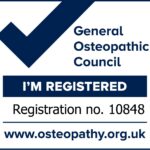Runner’s Knee, or patellofemoral pain syndrome (PFPS), is a common issue for runners, causing pain around the kneecap that worsens with activity. If left untreated, it can lead to chronic discomfort, but Osteopathy offers an effective, non-invasive solution.
What Causes Runner’s Knee?
Runner’s Knee is caused by repetitive strain on the knee joint, often due to improper movement, muscle imbalances, or misalignment. Common symptoms include pain around the kneecap, stiffness, swelling, and grinding sensations. Risk factors include overuse, muscle weakness, tightness, poor biomechanics, and inadequate footwear.
Anatomy Involved in Runner’s Knee
Runner’s Knee primarily affects the patellofemoral joint, involving key structures like the patella (kneecap), femur, quadriceps, patellar tendon, cartilage, iliotibial (IT) band, and hip/glute muscles. Misalignment, weakness, or tightness in these areas can lead to pain and irritation. Osteopathy helps address these imbalances, promoting recovery and preventing further issues.
Osteopathy: A Holistic Treatment Approach
Osteopathy focuses on the relationship between the body’s structure and function, addressing not only symptoms but also underlying causes. Here’s how it can help with Runner’s Knee:
-
- Pain Relief: Osteopathic techniques reduce inflammation and improve blood flow, relieving pain.
-
- Correcting Muscle Imbalances: Treatment targets weak or tight muscles that strain the knee.
-
- Improving Joint Mobility: Misalignments in the pelvis, hips, or ankles that affect the knee are corrected.
-
- Optimising Biomechanics: Assessments and corrections to your posture and gait ensure better movement patterns.
-
- Tailored Exercises: Strengthening and stretching exercises are customized to promote long-term recovery.
Additional Treatments at MG Osteopathy
At MG Osteopathy, we offer advanced treatments alongside Osteopathy:
-
- Shockwave Therapy: Stimulates tissue repair, reduces pain, and improves mobility.
-
- Dry Needling: Releases muscle tension and reduces knee pressure.
-
- Exercise Prescription: Tailored exercises to rebuild strength and prevent recurrence.
Pain Protocol and Recovery
Our treatment plan follows a three-phase approach:
-
- 0-2 weeks: Pain management with osteopathy, shockwave, and dry needling.
-
- 2-6 weeks: Strengthening and flexibility exercises to correct muscle imbalances.
-
- 6+ weeks: Gradual return to running, maintaining proper movement patterns.
Most patients recover within 6-12 weeks, with ongoing maintenance recommended to prevent future issues. Everyone is different meaning treatment and recovery will be tailored to your needs at MG Osteopathy.
Ready to Recover?
Don’t let Runner’s Knee slow you down. At MG Osteopathy, we provide personalised care with Shockwave therapy, Dry needling, and Exercise prescription designed for your needs. Book an appointment today and get back to pain-free running!





